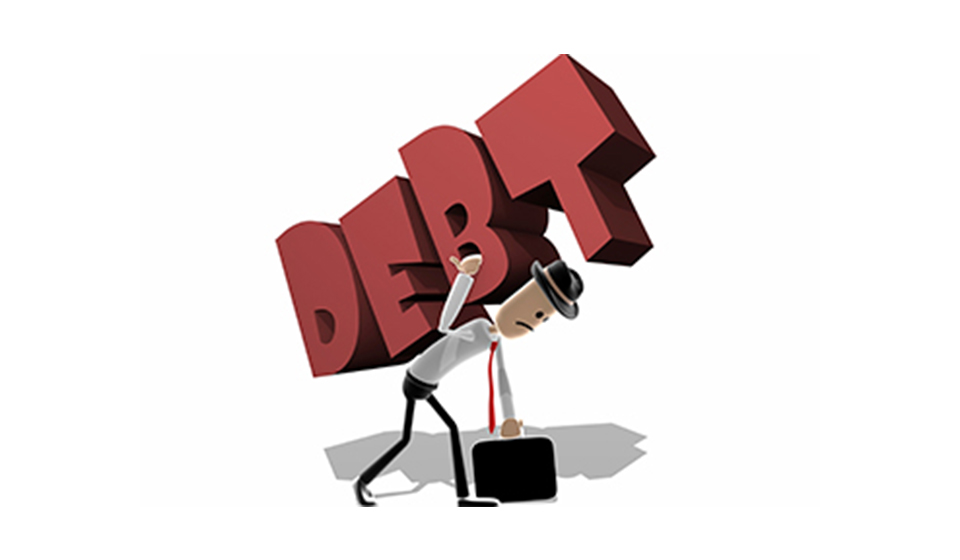
OR
Govt’s debt burden: Revenue collection falls short of covering recurrent expenditure
Published On: December 11, 2023 05:58 PM NPT By: Dilip Paudel

KATHMANDU, Dec 11: Since the revenue collection has fallen short of the target, the government finds itself compelled to secure loans simply to cover its day-to-day expenses. Reviewing the financial data spanning until December 9 in the current fiscal year of 2023/24 (roughly five months), it's evident that the government’s income falls short by Rs 86 billion to meet even its recurrent expenditures. This reveals a significant disparity between the government's income during this period and its expenditure, surpassing the amount received from subsidies by a staggering Rs 86.32 billion.
As per the data from the Financial Comptroller General Office (FCGO), a sum of Rs 345.95 billion has been amassed, while expenditures have tallied up to Rs 432.27 billion. This fiscal imbalance signifies that the government's revenue falls short of meeting its present expenses. Over a span of four months and 23 days, the government has garnered Rs 325.6 billion in revenue. Yet, in that same duration, recurrent expenditures have amounted to Rs 341.6 billion.
This stark comparison between revenue intake and recurrent spending reveals a deficit of Rs 16.4 billion. Even if the government comes up with a deficit budget by taking internal and external loans, it is not a good thing for the economy to have to take loans even for recurrent expenses. Recurrent expenses are administrative expenses.
Economic experts say that while it is natural to take loans for capital expenditure for development, it is not pleasant to take loans to meet administrative expenses. Former Finance Secretary Shishir Kumar Dhungana said that the revenue should meet the government's mandatory obligations (administrative expenses). "There is no doubt that the revenue should cover recurrent expenses," Dhungana said, "The revenue was collected less. Capacity should be increased.” He emphasized on increasing the capacity of tax administration. According to him, the revenue collection may have decreased due to the impact on the internal revenue due to the decrease in imports and various reasons.
The government has revised estimates to collect revenue of Rs 1.18 trillion in the recurrent year. Only 22.89 percent of the total revenue has been collected during this period. Finance Ministry Spokesperson Dhaniram Sharma said that the lack of revenue collection as expected has added to the challenge. "Revenue has not been collected as per the target," said Sharma, "It has been difficult to balance the fiscal balance." Sharma claimed that the revenue collection is improving.
The government, which has not been able to collect revenue according to the target, has not been able to spend. The government raised public debt as it was unable to meet its expenditure from revenue. The government has raised Rs 113 billion in public debt in four months of the recurrent year. Out of that, the internal debt is Rs 97.31 billion and the external debt is Rs 15.85 billion. As of November of the current year, the government's public debt has reached Rs 2.357 trillion. In that, the internal debt is Rs 1.183 trillion and the external debt is Rs 1.1735 trillion. The principal and interest of some old loans have been paid from the loans taken by the government. In July of the current year, the public debt was Rs 2.299 trillion. The government plans to mobilize Rs 256 billion domestic debt in the current year.
The size of the budget is increasing, but as the source of revenue is decreasing, the size of debt is also increasing. For the development of the country, the situation of having to take loans for recurrent expenses is a matter of concern even if loans are to be taken to advance large projects of infrastructure construction. The government takes loans when internal resources are insufficient.
The government has been making the budget considering subsidies, foreign and domestic loans as sources along with revenue. As the size of the budget increases, as the source of revenue decreases, the size of debt also increases. The government raises internal debt through Nepal Rastra Bank (NRB), while external debt is taken from foreign agencies. The government has been raising loans using various instruments through NRB. The central bank raises internal loans by auctioning development bonds, savings bonds and treasury bills. The government has announced a budget of Rs 1.75 trillion in the current year. The government has spent only 24.68 percent of the total spending target in the first quarter. Capital expenditure is only 11.14 percent.
You May Like This

NRB introduces cautiously flexible measures to address ongoing slowdown in various economic sectors
KATHMANDU, July 26: Nepal Rastra Bank (NRB) has taken cautiously flexible measures to facilitate cash flow in certain sectors including... Read More...

NRB to provide collateral-free loans to foreign employment seekers
KATHMANDU, July 26: Nepal Rastra Bank (NRB) through its monetary policy for the current fiscal year 2024/25 has introduced a... Read More...

NRB to review microfinance loan interest rate
KATHMANDU, July 26: The Nepal Rastra Bank (NRB) has decided to review the interest rate for loans to be issued... Read More...











Just In
- Challenges Confronting the New Coalition
- NRB introduces cautiously flexible measures to address ongoing slowdown in various economic sectors
- Forced Covid-19 cremations: is it too late for redemption?
- NRB to provide collateral-free loans to foreign employment seekers
- NEB to publish Grade 12 results next week
- Body handover begins; Relatives remain dissatisfied with insurance, compensation amount
- NC defers its plan to join Koshi govt
- NRB to review microfinance loan interest rate







Leave A Comment